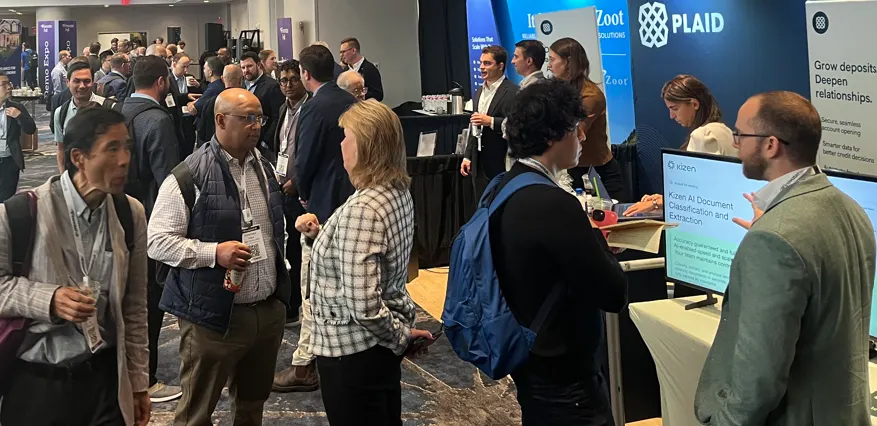FinovateFall 2025 is underway in New York City this week, bringing together more than 2,000 fintech and banking leaders for three days of demos, panels and networking.
The event has become one of the most prominent stages for new technology in financial services. Monday marked Day 1 of the event, and featured themes ranging from customer experience and AI to stablecoins and community banking. Here are six CFO-centric takeaways that stood out.
1. Customization is still a SaaS selling tactic
Smaller fintechs are continuing to promote customization as a way to win their first major clients. So, CFOs must still be wary of being oversold by smaller vendors, as there seems to be a willingness to adjust core products or capabilities to meet a single customer’s needs if required.
However, this can create a double-sided problem, as major customizations often undermine the scalability that makes SaaS valuable in the first place and can put them in over-promise, under-deliver territory. Custom builds by vendors may help secure a marquee customer, but face growing CFO skepticism because they can introduce more support costs and slower product road maps.
2. Products look the same; however, CX and security are the pitch
Lending platforms, fraud detection tools and payments solutions often looked interchangeable across multiple demos. What companies leaned on instead were promises of customer experience improvements or security gains. Faster onboarding, smoother integrations and stronger authentication were common talking points meant to set one product apart from another. The real test is whether a vendor can show how its technology delivers measurable results rather than just another version of what competitors are already selling.

3. Networking outshines booth traffic
Despite a busy sponsor floor on the first day, much of the energy was in the hallways and meeting areas. Attendees clustered around private lunches and scheduled one-on-one meetings. Booths often sat quietly while conversations unfolded elsewhere. The event itself emphasized this shift; it highlighted more than 26,000 meetings across three days as a marketing tactic.
4. AI is framed around ROI, not just hype
Artificial intelligence was everywhere on the agenda, from generative AI demos to a closing panel on how agentic AI can create new revenue streams. What stood out was a shift in tone. Instead of presenting futuristic visions, speakers and sponsors focused on practical outcomes. Can AI reduce fraud losses, speed customer onboarding or help a bank lower compliance costs? The conversation among technology developers and leaders has moved from curiosity to configuring a measurable return, a move CFOs have been waiting for.

5. Stablecoins are moving from fringe to foundation
Both the keynote address and conversations across the event made it clear that stablecoins are becoming a major part of the future of banking. Once treated as a fringe concept tied to crypto speculation, stablecoins are now being discussed as infrastructure that could underpin B2B payments. The dialogue is shifting into traditional finance circles, and executives will need to decide when and how their organizations engage.
6. Credit unions and community banks may be testing grounds for new technology
The event carved out dedicated sessions for credit unions and community banks, reflecting how fintech firms view these institutions as early adopters. Smaller organizations may be more open to experimentation and can provide valuable feedback before solutions are scaled to larger players. What works for community banks and credit unions could soon influence offerings across the broader banking landscape.
FinovateFall is an Informa event. Informa owns 57% of Informa TechTarget, the owning entity of CFO.com.





